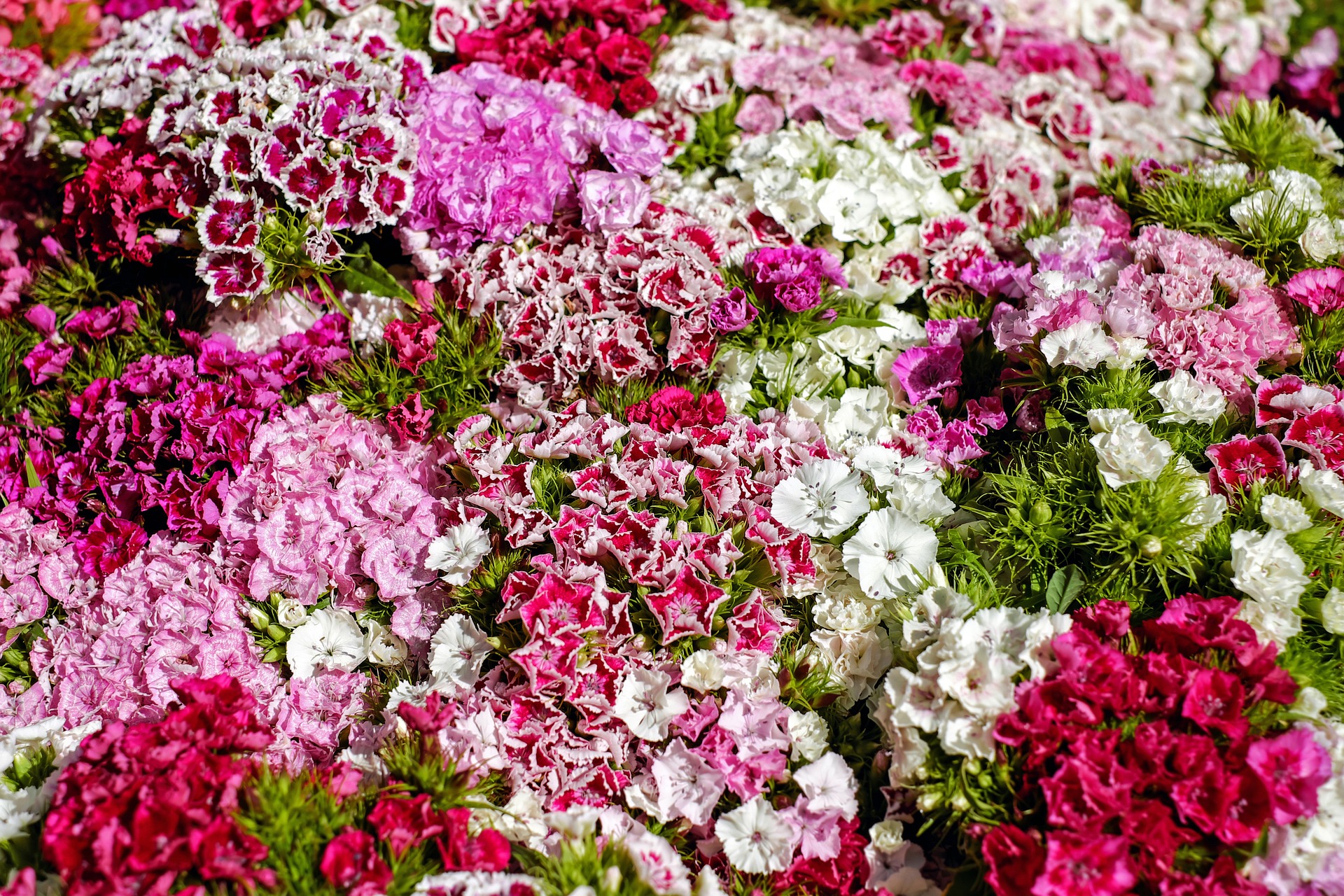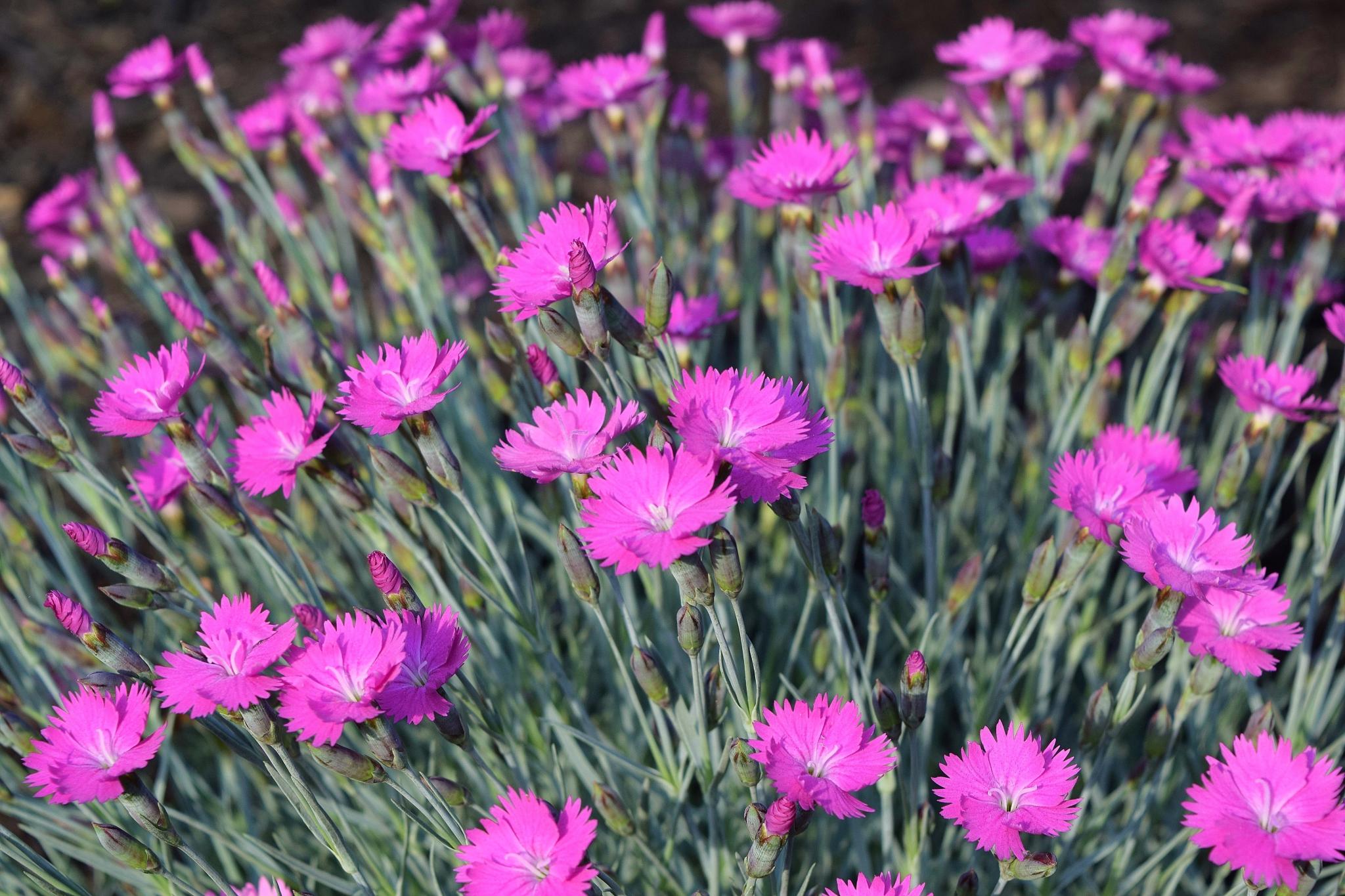
Photo Credit
neotemlpars/Shutterstock
Subhead
Charming, Clove-Scented Blooms That Brighten Beds and Borders
Read Next
Types
The Dianthus genus contains over 300 species and hundreds of hybrid varieties. According to the North American Dianthus Society, these are the best varieties for home gardens:
- Hardy rock garden pinks: alpine pinks (Dianthus alpinus) and Cheddar pinks (D. gratianopolitanus) and their hybrids; strongly scented, small flowers on 2- to 6-inch-tall plants; grassy gray-green leaves; hardy in Zones 3 to 9
- Cottage pinks (D. plumarius): clove-scented, lilac-pink flowers; grass-like foliage, 12 to 15 inches tall; deadhead for rebloom in fall; hardy in Zones 3 to 9
- China pinks (D. chinensis): lightly scented flowers on 6- to 10-inch-tall stalks over 3- to 4-inch-high mounds; hardy perennials in zones 7 to 10
- Clusterheads, e.g., Sweet William (D. barbatus): clusters of single or double pink, red, salmon, or white flowers on 12- to 24-inch-tall stems; annual, biennial, or short-lived perennial; hardy in Zones 3 to 9
- Carnations (D. caryophyllus), aka the florist’s flower: multi-petaled blooms on 12- to 24-inch stems; curly blue-green foliage; hardy in Zones 5 to 8. Choose hardy perennial border carnations (aka “wild carnations”) over frost-tender varieties that require a greenhouse.
Miscellaneous fragrant species hardy in Zones 3 to 8 include:
- Sand pink (D. arenarius): 6- to 10-inch-tall deeply fringed white blossoms
- Noe’s pink (D. petraeus ssp. noeanus), an alpine species with white flowers
- Superb pink (D. superbus), aka fringed pink, for its feathery, deeply cut petals
- ‘Grenadin Yellow’ (D. caryophyllus): 16 to 20 inches tall, creamy yellow blooms

Gardening Products
Cooking Notes
Dianthus flowers are edible; the petals are sometimes candied and used as edible decoration. Discard the bitter petal base before using and avoid ingesting the foliage and stems, as they can cause indigestion.
More Like This
Very informative and very thorough. The author is knowledgeable about the subject and one can tell she has researched the topic to write competently about it.
Can you bring this inside in winter as a houseplant?
I planted a small bunch of dianthus in our landscape area at front, that was five years ago. They have spread to cover the edge over a large area. In spring and summer we have masses of blooms, during the winter months it . a lovely blue green foliage for color interest. But the best part is that it requires almost no maintenance.
I love dianthus, I have a wide variety of them in my wildflower gardens. My favorite is Sweet Williams.










Comments